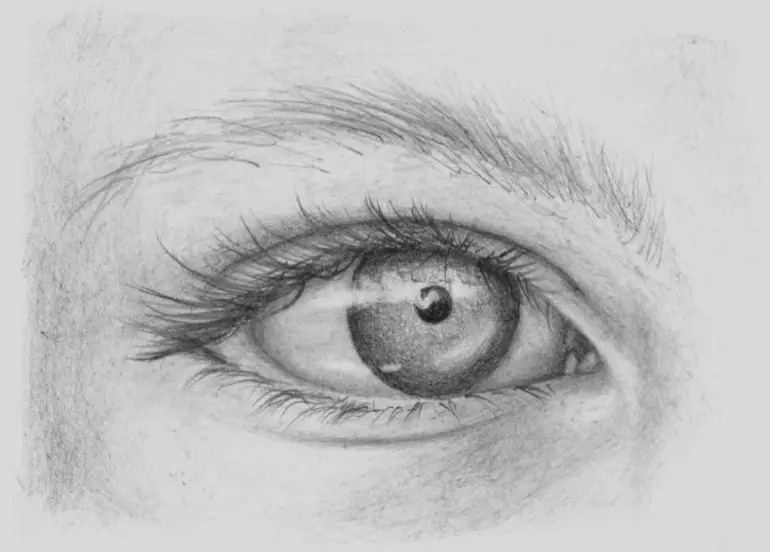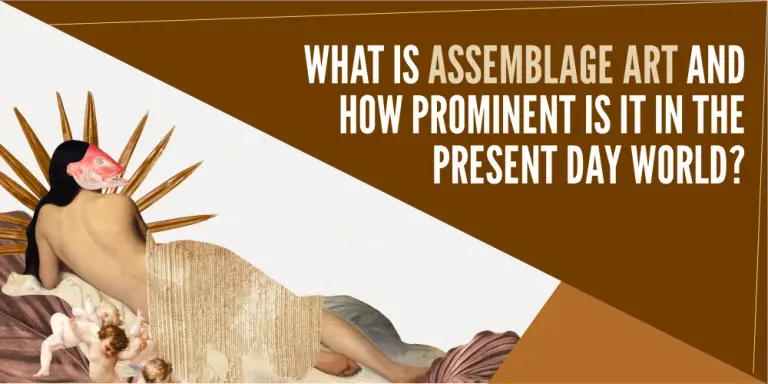Street Art vs Graffiti (How are They Different?)
For ages, people have shown creativity and expressed themselves through art. Two art forms that have helped in self-expression amongst young people are Street Art and Graffiti.
Chances are that you’ve seen a few buildings, city walls, or train cars covered in painted murals or styled writings and either admired it or considered it to be vandalism. Sometimes it can be challenging to tell street art and graffiti apart. What is the difference between these two similar art forms?
Street art is imaged-based and created with permission, while graffiti is word-based and illegal. The purpose of street art is mostly beautification, while graffiti is often associated with defacing public property and marking territory.
Read on, and I’ll highlight the differences between graffiti and street art and share with you the backstory of each art form.
What is Street Art?
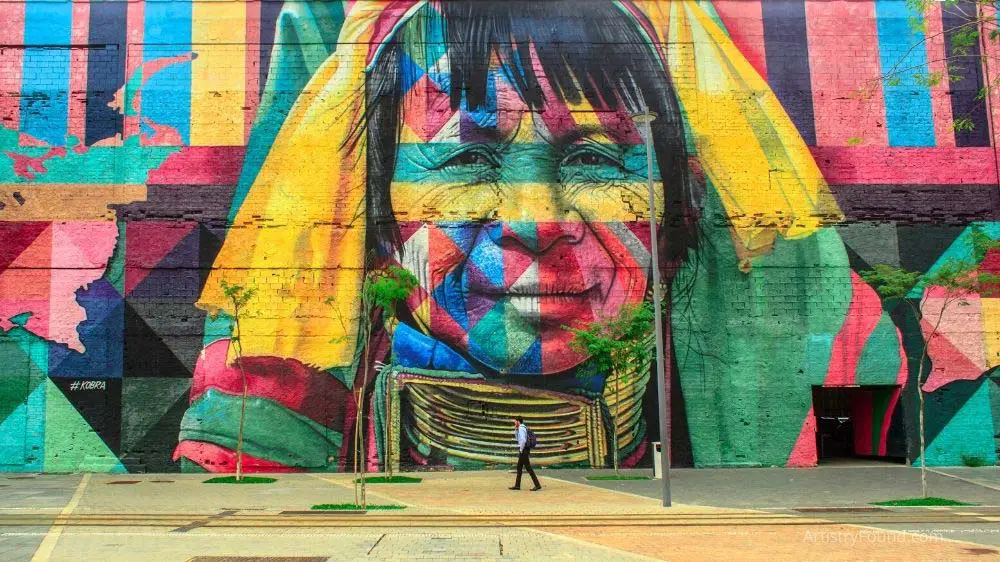
(This article may contain affiliate links and I may earn a commission if you make a purchase)
John Fekner describes street art as “all art on the street that is not graffiti.” That is to say, graffiti is not considered street art. Street art is a visual art, often found in the form of a painted image, and is categorized by being independent art that’s created legally (usually) and found in a public space.
Street murals (large paintings) you see on the sides of buildings or in public spaces are considered street art. Murals are generally commissioned, but not all street art is commissioned.
Most street art takes the form of paintings but not all street art is realized using the format of murals. Street art uses 2D paintings that often fully cover the walls of a building.
Video projection, rain-activated art, out-of-place installation, yarn bombing, and public sculptures are also forms of street art. The three basic elements of art are form, line, and shape. Street art uses those elements to create beautiful images for the public to enjoy.
It is often easier to grasp the idea behind street art, when compared to word graffiti, and to enjoy its aesthetic appeal. It serves as entertainment while also beautifying city streets.
The term “street art” is often used interchangeably with terms such as independent art, neo graffiti, guerilla art, and post-graffiti.
What Is Graffiti Art?

While street art and murals have existed for a while, it is safe to say that the idea of painting on the streets started with graffiti. Thus, graffiti can be said to be the father of street art, and most street artists draw inspiration from it.
Graffiti is a contemporary public art form categorized by words written in public spaces or places. Graffiti art is referred to as rebellious art. While laws often consider it vandalism, over time, it has evolved from its label of “criminal mischief” to be considered an accepted art form in some cases.
The three main elements of the graffiti movement are:
- Tag – The most basic form of graffiti done as a signature using an exagerated style that’s painted or tagged in one color.
- Throw Up – Is a more complex tag done with a single color outline and a single color fill.
- Piece – A “piece” is shorthand for “masterpiece”. It is a big graffiti artwork that takes a lot of time and effort to complete.
Blockbusters, heaven, wildstyle, paste-ups, stencils, stickers, and posters are also recognizable forms of graffiti artwork.
Graffiti artists pride themselves in painting in especially difficult-to-reach places. “Heaven” is a kind of tag that’s painted in hard-to-reach areas. The artist whose work is found in a difficult-to-reach location gets a lot of respect from fellow graffiti artists.
Graffiti artists generally refrain from seeking public understanding of their work. Even though they develop their urban art in public, they do not want publicity.
Graffiti is commonly created to communicate with other graffiti artists in the community. In certain communities, gangs make use of graffiti as a way of marking their territory.
Most graffiti artists aim to remain anonymous. So a graffiti artist who is well known and accepted; is well on their way to becoming a street artist.
However, there are a lot of pure graffiti artists who are famous and appreciated under their graffiti pseudonyms. For example, Utah and Ether, Nekst, and Good Guy Boris from Bulgaria.
Street Art and Graffiti: Similarities
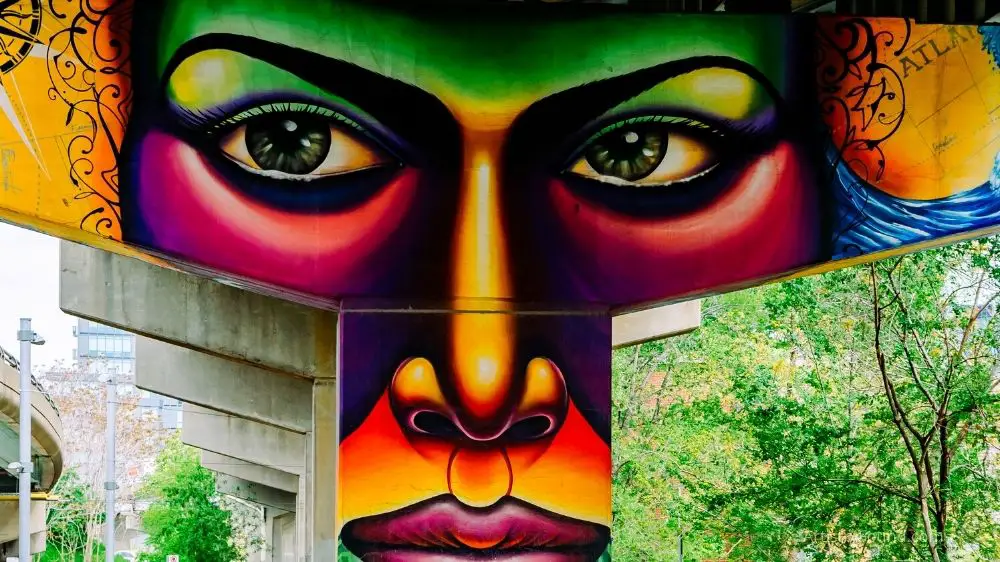
While Street Art and Graffiti serve different ends, there are some similarities between the two art forms. The associations between street art and graffiti have to do with Location, Political and Social commentary, and Materials used.
Street Art and Graffiti Are Found in Similar Locations
The location for both types of art is within a public space in an outdoor urban environment where their artworks can be appreciated and seen by all.
Some of the typical places you find Street Art are:
- Outside walls of public and pivate buildings
- Public parks
- Fire hydrants
- On the street itself
Places you’re likely to find illegal graffiti:
- Freeway overpass
- Subway car
- Railway box car
- Street signs
- Dumpsters
Graffiti and Street Art Both Provide Political and Social Critics
Street art and Graffiti are a way for artists to communicate with everyday people about socially relevant themes and also to criticize the society they find themselves in.
The art is used to get the uncensored message out to the masses. Banksy, for example, uses some of his graffiti art for political activism.
Street Art and Graffiti: The Bridge
Tracy 168, a Graffiti artist, has had their work shown at the Brooklyn Museum. “The bridge” stands for how Street artists and Graffiti artists have started to meet in the middle.
Both famous Street artists and Graffiti artists are being encouraged by cities to visit and leave their marks as a way to create a tourist attraction for visitors.
Shepard Fairey, another Graffiti Artist created the “Hope” poster during Barrack Obama’s 2008 presidential campaign. While Banksy’s work has sold in the high six figures.
These high-profile artists have generated collector interest in other street artists.
Most commercially established artists start as Graffiti artists before bridging the gap and making the move to becoming “legit” Street artists.
Street Art vs Graffiti: Differences
The differences between both arts have to do with the naming of the styles, material, legality, and public perception.
Commercial Intent: Street Artists vs Graffiti Artists
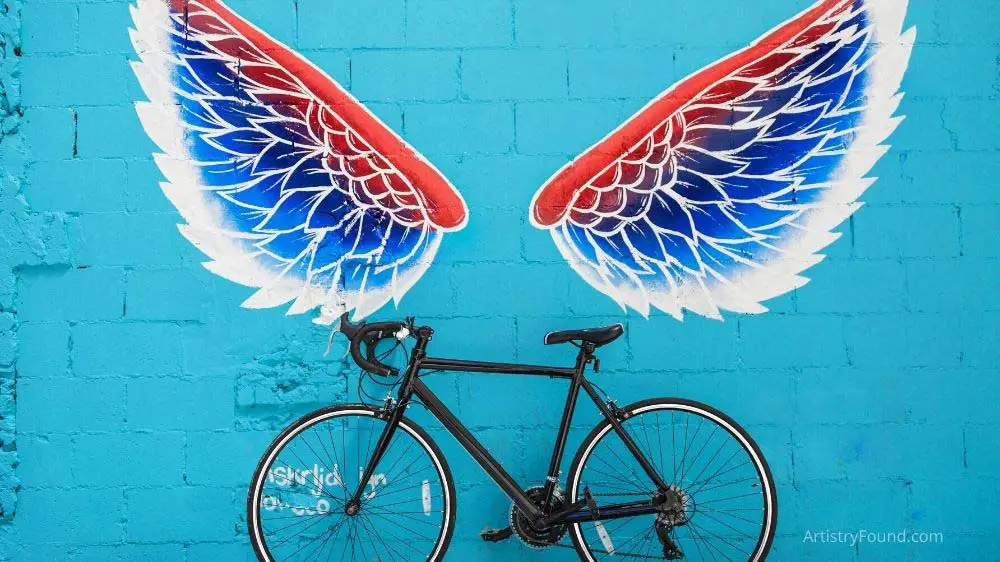
Graffiti artists refer to themselves as a “writer” rather than an artist. Their signature is their Tag.
Graffiti artists do not use their real names and have no interest in their works being promoted commercially.
Street artists, however, are generally working commercial artists. They proudly sign their name to their murals and other works.
Graffiti and Street Artists Use Different Materials
A Street art artist will work with any paints, tools, or materials they deem fit to complete their artwork. Graffiti artists, on the other hand, commonly just use spray paint. Materials for graffiti, however, have begun to evolve and become more diverse.
Paste-ups and multimedia are growing in popularity. Stencil, vinyl, eggshell stickers, clay, markers, fabric wool, and textiles are now seen in street graffiti.
Legality of Street Art and Graffiti
While Street art is generally considered lawful because artists are typically hired, allowed, or given permission to complete their work. For instance, if a building owner wants a street art style mural on the side of their building, they will seek out a qualified artist to complete the painting.
Graffiti, however, is considered illegal. The Golden Rule of graffiti art is to not get caught. Therefore, graffiti writers or artists do not seek permission.
On the other hand, street artists usually seek permission to paint.
Street Art or Graffiti: Which Art Shows More Talent?
Without a doubt, most Street art requires some real artistic talent. The large beautiful murals are well thought out and the artists have taken a great deal of time to create them.
Because most graffiti writing is painted illegally, it has to be done quickly. As a result, while there are some truly stunning examples of artistic graffiti, a lot of graffiti art you see on the street requires zero talent and has little to no aesthetic appeal.
It’s due to this fact that graffiti is usually considered vandalism rather than art.
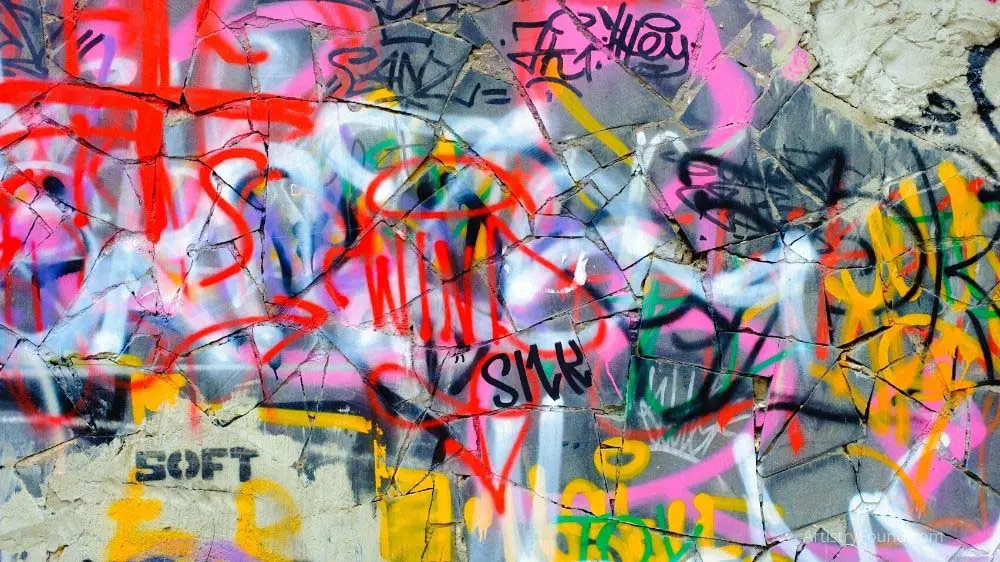
Culture: Graffiti vs Street Art
Different cultural practices guide both types of artists. For example, while it is seen as an accepted form of aggression to tag on or over the works of other graffiti artists or writers, this is considered unacceptable to street artists.
Graffiti culture imbibes rivalry amongst writers, but street artists encourage other street artists and respect and admire their work.
Perception of Graffiti vs Street Art
Many people see Street art as a welcome form of art but frown upon Graffiti.
Graffiti is considered a nuisance and a rebellious activity that damages private and public property.
Street art is seen as a cool and trendy development for most cities and downtown areas that adds positively to the vibe of the city streets. While Street art is more prevalent in large cities, smaller towns and cities have begun to embrace street art as well.
Arts on The Street
Though there are some significant differences between Street art and Graffiti art, they are both forms of art that are done in a public place and exhibit the talents and artistry of the individuals involved.
The next time you’re in a city with Street art and/or Graffiti, take the time to appreciate it when you see something beautiful that requires true artistic expression to create.


